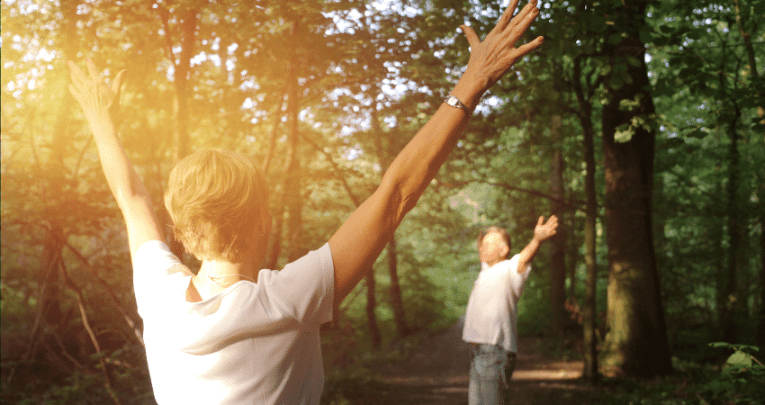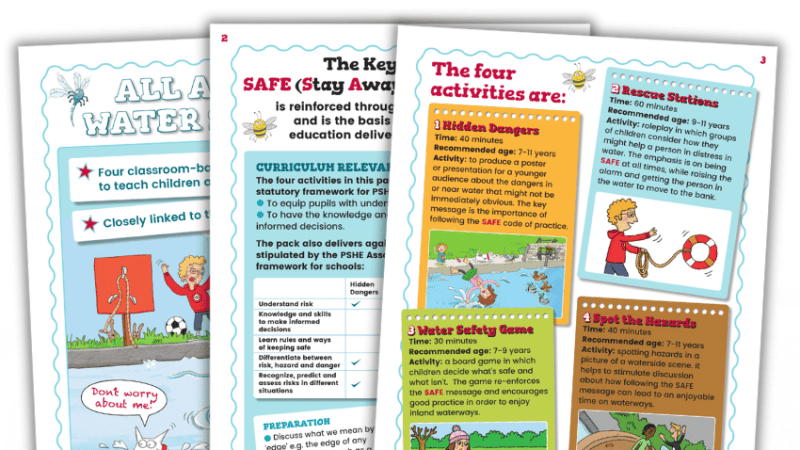Forest bathing – Introduce your class to nature therapy with this Japanese practice

Help your class destress and reconnect with nature by building this Japanese ritual into your routine

- by Jenn Brookbanks
- Education and arts marketing officer at Forestry England
Looking for unusual school trip ideas? How do you fancy helping your class de-stress and boost their emotional wellbeing in a natural way via a spot of forest bathing?
What is forest bathing?
Known in Japan as shinrin yoku, the practice of forest bathing is all about being calm and quiet among trees and observing nature around you, all while taking deep breaths.
While forests provide the perfect environment to reconnect with nature, forest bathing is also suitable for outdoor spaces like gardens, urban parks and even your school playground.
Rather than trying forest bathing as a one-off experience, I recommend practising regularly for short periods, building time in nature into your class’s daily life, or via a weekly or fortnightly routine.
Short exercises are perfect for teaching concentration and mindfulness and also provide an excellent opportunity for children to learn from each other.
Health benefits of forest bathing
You’re aiming to provide a relaxing and sensory experience; encouraging children to use mindfulness and understand how it can have a positive effect on their health and wellbeing.
One of the most important things to note is that forest bathing is a digital-free experience. You don’t need any technology or additional items – just you (as leader of the session) and your class.
Find a quiet spot that makes your class feel safe. You might like to try different outdoor areas over the course of a term to decide on the place that feels best as a group.
When you’re ready, ask children to slow down and move through the outdoor space slowly so they can see and feel more, while taking long breaths deep into the abdomen.
Extending the exhalation of air to twice the length of the inhalation sends a message to the body that it can relax. In other words, ask children to make their ‘out’ breath a little bit longer than their ‘in’ breath, if they can.
Forest bathing as a sensory experience
Next, ask your class to stop and sit, if possible. Encourage children to take in their surroundings using all five senses.
How does the forest environment make them feel?
Be observant, looking at nature’s small details. Ask pupils to close their eyes. How many sounds can they hear? Where are the sounds coming from? Can they sniff like a rabbit? What do they smell?
Ask your class to share their observations with a partner.
Then, talk to your class about going on a magical forest adventure. You will support them to let their mind wander through the forest of their imagination.
Ask the children to keep their eyes closed and share what colours they can see. What animals live in the imaginary forest? What sounds echo through the trees?
When everyone is ready, take three slow breaths and open your eyes.
Mindful observation
After the sensory activity, lead your class in sitting quietly and partaking in mindful observation. Ask the children to really focus on what they can see, hear, touch, smell and taste right in that moment, rather than about what else they are going to do that day.
It’s OK if their mind wanders off, just gently bring focus back to their surroundings.
For this activity, it helps if everyone keeps their eyes open. The colours of nature are soothing and studies have shown that people relax best while seeing greens and blues.
Ask the group to think about five things they can see, four things they can hear, three things they can touch, two things they can smell and one thing they can taste.
Then ask them to think about one emotion or feeling they’re aware of.
Stay as long as you can, starting with a comfortable time limit and building up to longer periods of mindfulness.
As part of your forest therapy session, you could also consider extra sensory activities that can be done in natural environments (be sure to watch out for brambles and stinging nettles).
Creating sound maps, making perfume from woodland materials or finding a tree to hug can all increase children’s sensory awareness.
Jenn Brookbanks is education and arts marketing officer at Forestry England. The organisation welcome trips to forests from schools. Visits can either be self-led or supported by Forestry England partners. Find your closest forest and book an immersive forest experience.











